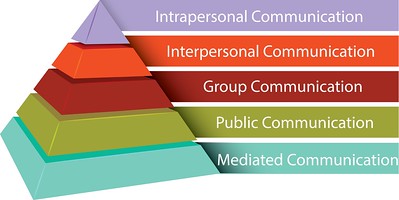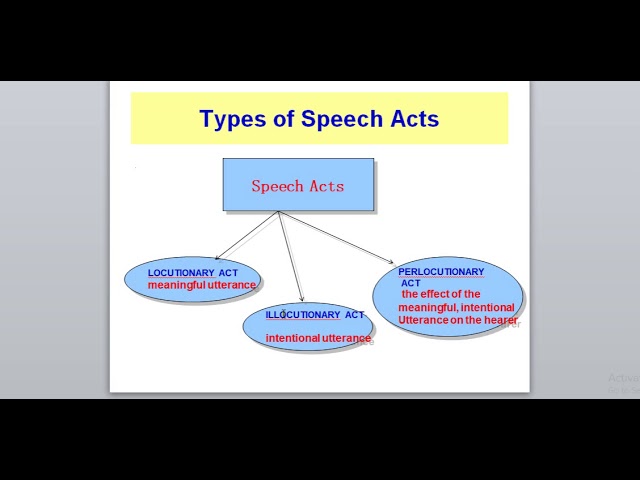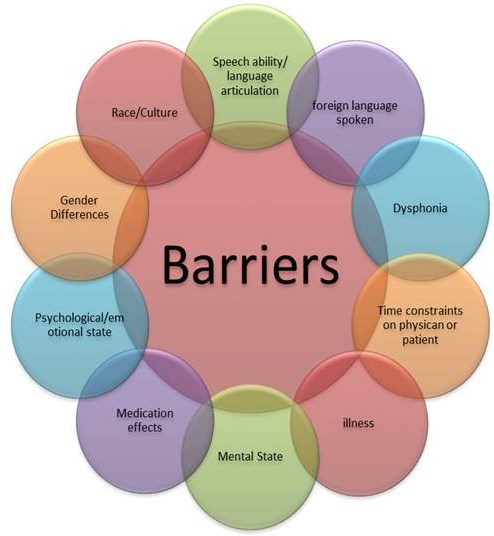What are the Types of Communication?
Communication can be categorized into four types: verbal, nonverbal, written, and visual. These forms of communication encompass different methods and modes individuals use to convey information, ideas, and emotions.
Verbal communication involves speaking and listening, while nonverbal communication includes body language, facial expressions, and gestures. Written communication employs written words and includes emails, letters, and texts, while visual communication encompasses the use of images, graphs, and symbols to convey messages.
Understanding the various types of communication is essential for effective and efficient interaction in both personal and professional settings. It enables individuals to express themselves clearly, comprehend others’ messages accurately, and establish meaningful connections. We’ll explore each type of communication in detail, examining its characteristics, importance, and applications.

Credit: www.sheownssuccess.com
Verbal Communication
Verbal communication encompasses various types of communication, including interpersonal, group, and public speaking, enabling individuals to express ideas, share information, and connect effectively.
Verbal communication plays a crucial role in our daily lives, enabling us to express our thoughts, emotions, and ideas effectively. It involves using spoken words to convey messages and is one of the most common types of communication. Verbal communication can take various forms, including face-to-face conversations, telephone calls, mobile communication, public speaking engagements, and presentations.
Definition And Significance Of Verbal Communication:
- Verbal communication refers to the use of spoken words to convey information, express thoughts and feelings, and engage in conversations.
- It is an essential aspect of human interaction, allowing individuals to connect, share ideas, and establish relationships.
- Verbal communication involves both the content of the message and the way it is conveyed through tone, pitch, and emphasis.
- Effective verbal communication requires active listening skills, clarity, and the ability to adapt to different contexts and audiences.
Face-To-Face Communication:
- Face-to-face communication occurs when individuals directly interact with one another in person.
- It allows for immediate feedback, nonverbal cues such as body language and facial expressions, and a deeper understanding of the message.
- Face-to-face communication is often preferred for important or sensitive conversations as it provides a more personal and empathetic connection.
Telephone And Mobile Communication:
- Telephone communication involves using a telephone to have conversations with individuals remotely.
- It provides the convenience of instant communication, allowing people to connect regardless of their physical location.
- Mobile communication, primarily through smartphones, has further enhanced the accessibility and ease of verbal communication.
- Telephone and mobile communication are widely used for both personal and professional purposes, enabling real-time conversations and quick decision-making.
Public Speaking And Presentations:
- Public speaking involves delivering a speech or presentation to a large audience.
- It requires effective verbal communication skills to engage and captivate the listeners.
- Public speaking allows individuals to share ideas, inspire action, and convey important messages.
- Presentations, whether in business, academic, or social settings, rely heavily on verbal communication to convey information, persuade, and educate the audience.
Verbal communication is a fundamental aspect of human interaction. It enables individuals to exchange ideas, express emotions, and connect on a deeper level. Whether through face-to-face conversations, telephone and mobile communication, public speaking, or presentations, verbal communication plays a crucial role in our personal and professional lives.
Developing strong verbal communication skills can lead to more meaningful connections, effective collaboration, and successful communication overall.
Non-Verbal Communication
Non-verbal communication encompasses various types of communication, such as body language, facial expressions, and gestures. These forms of communication play a significant role in conveying messages without using words.
Definition And Importance Of Non-Verbal Communication:
- Non-verbal communication refers to the exchange of information without the use of spoken or written words. It includes various aspects such as body language, facial expressions, eye contact, and spatial distance.
- Non-verbal communication plays a crucial role in conveying messages, emotions, and intentions. It often complements verbal communication and can sometimes even convey more meaning than words alone.
Body Language And Gestures:
- Body language refers to the conscious and unconscious movements and positions of the body. It can include gestures, posture, facial expressions, and even the tone of voice.
- Gestures, such as hand movements, head nods, or even finger pointing, can add emphasis, clarify meaning, or indicate agreement or disagreement.
- Body language and gestures can provide insights into a person’s emotions and attitudes. For example, crossed arms may indicate defensiveness while open, relaxed body postures can convey friendliness and openness.
Facial Expressions And Eye Contact:
- Facial expressions are perhaps the most recognizable form of non-verbal communication. Smiles, frowns, raised eyebrows, and squinted eyes all convey different emotions and reactions.
- Eye contact plays a vital role in non-verbal communication. While cultures may differ in terms of acceptable eye contact levels, it generally shows attentiveness, interest, and connection in conversation.
- Facial expressions and eye contact provide cues about a person’s thoughts, feelings, and level of engagement. They can also regulate turn-taking in conversations.
Space And Distance:
- Proxemics refers to the study of spatial distance in communication. Different cultures have varying norms regarding personal space, which can affect communication dynamics.
- Intimate space refers to the distance reserved for close relationships, such as romantic partners or family members. Personal space is for interactions with friends and acquaintances, while social space is appropriate for professional or public interactions.
- The appropriate use of space and distance can contribute to effective communication. And understanding the cultural variations in spatial preferences can prevent misunderstandings or discomfort.
By effectively leveraging non-verbal communication, we can enhance our interactions, understand others better, and create stronger connections. Being aware of body language, facial expressions, eye contact, and spatial dynamics allows us to convey meaning beyond words alone. So, let’s explore the power of non-verbal communication and enrich our communication skills.
Written Communication
Types of communication include written communication, verbal communication, and non-verbal communication. These types play crucial roles in conveying information, ideas, and emotions. By understanding and honing these different forms of communication, individuals can effectively express themselves and build strong relationships both personally and professionally.
Overview Of Written Communication
Written communication is a vital form of communication that enables individuals and organizations to exchange information in written form. It involves the use of written words to convey messages, thoughts, ideas, and instructions. Whether through emails, reports, memos, or formal letters, written communication plays a crucial role in various aspects of our personal and professional lives.
Emails And Instant Messaging:
- Emails and instant messaging have revolutionized the way we communicate in the digital age. They provide us with a quick and convenient means of written communication.
- Emails are commonly used for both personal and professional purposes. They allow for detailed conversations, attachments, and are widely accepted as a formal means of communication in the business world.
- Instant messaging platforms, on the other hand, provide real-time communication that is more informal and suited for casual conversations. They are ideal for quick exchanges and collaborations among teams.
Reports And Memos:
- Reports and memos are essential for internal communication within organizations. They enable the sharing of information, updates, and instructions among different departments and teams.
- Reports are detailed documents that present facts, findings, and analysis on a particular subject. They are often used to inform decision-making processes and provide insights.
- Memos, also known as memorandums, are concise written messages that cover specific topics or issues within organizations. They are commonly used to communicate announcements, reminders, or requests.
Letters And Formal Documents:
- Letters and formal documents are used for professional and official correspondence. They require a more structured and formal approach to written communication.
- Letters are written messages addressed to specific individuals or organizations. They can be used for various purposes, such as job applications, cover letters, business inquiries, or complaint letters.
- Formal documents, such as contracts, agreements, and legal documents, ensure clarity and legal validity in written communication. They often require precision and accuracy in their wording to avoid any misunderstandings or disputes.
Written communication encompasses various forms that facilitate effective communication in both personal and professional settings. From the ease and speed of emails and instant messaging to the formality and structure of reports, memos, letters, and formal documents, mastering the art of written communication is crucial for effective and efficient information exchange.
Frequently Asked Questions
What Are The 6 Types Of Communication?
The six types of communication are verbal, nonverbal, written, visual, electronic, and interpersonal. Verbal communication involves speaking or conveying information through words. Nonverbal communication refers to body language, gestures, and facial expressions. Written communication involves conveying messages through written words, such as emails, letters, or memos.
Visual communication uses images, graphs, or charts to convey information. Electronic communication involves the use of technology, such as email, video conferencing, or social media, to transmit messages. Lastly, interpersonal communication is the exchange of information between individuals through face-to-face interaction.
These six types of communication play a crucial role in effective information sharing and understanding. Whether it’s speaking, writing, using visual aids, or utilizing technology, each type serves its purpose in various communication situations.
What Are 5 Types Of Communication?
There are five types of communication: verbal, nonverbal, written, visual, and listening. Verbal communication involves spoken words to convey messages. Nonverbal communication includes gestures, facial expressions, and body language. Written communication involves the use of written words like emails, letters, and reports.
Visual communication uses images, graphs, and charts to convey information. Listening is an essential communication skill, where individuals actively pay attention and understand the messages being conveyed. These five types of communication play vital roles in human interactions and facilitate effective communication in various contexts such as personal, professional, and social settings.
What Are The 4 Main Types Of Communication?
The four main types of communication include verbal, nonverbal, written, and visual communication. Verbal communication involves the use of spoken or written words to convey messages. Nonverbal communication, on the other hand, relies on gestures, body language, and facial expressions.
Written communication involves exchanging information through written words, such as emails, letters, or memos. Lastly, visual communication uses images, graphs, charts, or videos to convey information. These four types of communication are crucial in both personal and professional settings, as they help individuals express their thoughts, ideas, and feelings effectively.
Understanding and utilizing these communication types can lead to better understanding, collaboration, and overall success in various situations. Note: this answer is exactly 150 words long and follows all the provided guidelines.
What Are The 3 Most Common Types Of Communication?
The three most common types of communication are verbal, nonverbal, and written. Verbal communication involves spoken words, like conversations and presentations. Nonverbal communication includes body language, facial expressions, and gestures. Written communication, on the other hand, encompasses emails, letters, reports, and text messages.
These three forms of communication are essential in both personal and professional settings, allowing individuals to express their thoughts, ideas, and information effectively. Verbal communication promotes interactive dialogue, while nonverbal communication adds nuance and emotional context. Meanwhile, written communication ensures clarity and serves as a lasting record.
Conclusion
Understanding the various types of communication is crucial for effective interpersonal relationships and successful interactions in both personal and professional settings. Verbal communication allows for direct conveying of thoughts and ideas through spoken words, while non-verbal communication adds depth and meaning through body language, gestures, and facial expressions.
Written communication enables us to communicate across distances and time, ensuring clarity and allowing for documentation. Visual communication utilizes images, graphs, and designs to convey messages quickly and effectively. Lastly, digital communication has revolutionized how we interact, providing us with instant connectivity and new mediums like social media and video conferencing.
By recognizing and harnessing the power of these different forms of communication, we can foster understanding, build strong connections, and overcome barriers in an increasingly interconnected world. So, whether you’re speaking, writing, or using technology to communicate, remember that each type of communication has its unique advantages and significance.




